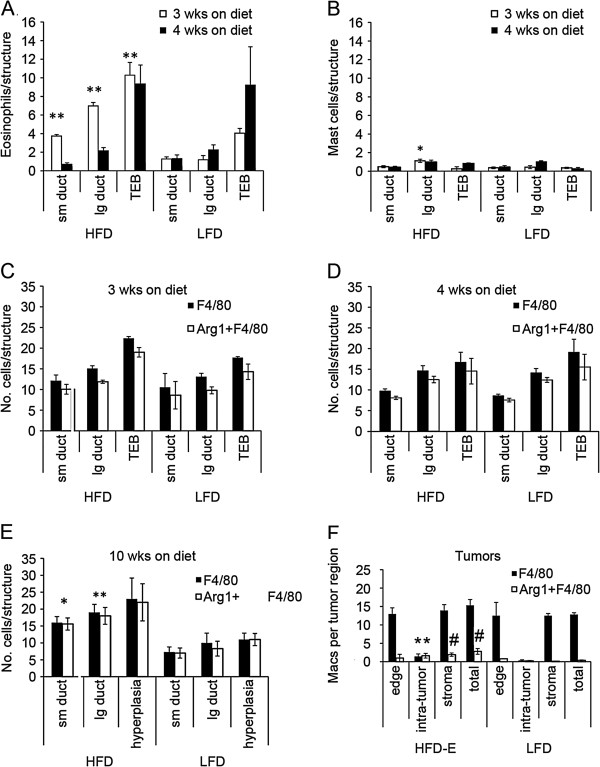Figure 3.
Inflammatory cell recruitment in mammary gland, tumors, and tumor microenvironments in high fat diet- and low fat diet-fed mice. (A and B) BALB/c mice were started on diets at 3 weeks of age and terminated after 3 or 4 weeks for analysis of eosinophil (A) and mast cell (B) recruitment to mammary gland epithelial structures, as described in the Materials and Methods. At 3 weeks on diet, eosinophil recruitment (A) for all mammary structures and mast cell recruitment (B) for large ducts was significantly increased in high fat diet (HFD) compared to low fat diet (LFD)-fed mice. *P = 0.0001; **P = 0.03. (C, D, E, and F) Sections from mice terminated at 3 weeks on diet (C), 4 weeks on diet (D), 10 weeks on diet (E) and from HFD-E and LFD tumors (F) were double immunofluorescently stained with anti-F4/80 and anti-Arg1 antibodies, as described in Materials and Methods, and then analyzed for macrophage recruitment. At 10 weeks, total macrophage (F4/80) and M2 macrophage (Arg1 + F4/80) recruitment (E) was increased adjacent to small ducts (*P = 0.01) and large ducts (**P = 0.05) in mammary glands of HFD-fed mice. The increase in F4/80 and Arg1 + F4/80 staining in HFD versus LFD hyperplasia was not significant (P = 0.16). Tumor-associated macrophages (F) were quantified based on their location at the tumor edge, within the tumor (intra-tumor), in the tumor stroma (stroma), and combined for total tumor-associated macrophages. *P = 0.05 that there were more F4/80 and Arg1 + F4/80 labeled macrophages within HFD-E tumors. #P = 0.01 that there were more Arg1 + F4/80 macrophages (total) in HFD-E tumors and within HFD-E stroma.

